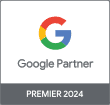Billy Beane applied “Moneyball” statistics, such as on-base-percentage and slugging percentage, to compete against big spending teams in baseball. He focused on statistics like stolen bases, batting averages, and runs batted in. Similarly, a paid search professional is constantly looking for the right combination of data and tactics to gain the upper hand and “level the playing field” to drive converting traffic to a client’s website at the lowest cost per acquisition possible. RLSAs are one of the newest additions to the paid search marketing professional’s arsenal.
There’s been a lot of chatter recently about RLSAs (Remarketing Lists for Search Ads) – since they were launched on AdWords in June, 2013. RLSAs are what Google likes to call “Remarketing 3.0″. So what is it? RLSAs allow you to use your remarketing lists to go after searchers on the search network. Basically, instead of displaying ads on the Display Network only, as normally happens with remarketing, via RLSAs you can show text ads to people on either Google’s search network or search partner network. As Google also describes it “Bringing intent, context, and audience together for better performing search campaigns.”
Comparing Traditional Google Remarking vs Google RLSAs
Traditional Google Remarketing
Google RLSAs
Use remarketing lists/tagging
Yes
Yes
CPC Bidding Available
Yes
Yes
Keyword targeted
Yes
Yes
Banner advertising
Yes*
No
Network
Display
Search & Search Partners
Capping
No more than 5 ads/day – an attempt to avoid potential buyers being annoyed by constantly seeing your ads
Not necessary if doing multi-variate testing – the person is actively searching for relevant/related terms
*Display network text ads are still available in addition to banner ads.

Google has laid out three important factors to keep in mind when using RLSAs (the “3 levers” as they call them):
- Bid on broader keywords – these people have visited your site already, so they have established an interest in your offering. Look for some terms that are a little higher up on the search funnel. And keep Ben Hunt’s awareness ladder in mind when doing this:
- What searchers are looking for:
- Nothing – don’t know of a need
- Basic information for the problem – what is it and why does it need to be solved?
- Information on solutions available
- Information on the particular benefits of a solution
- Validation of their decision to purchase a specific solution
- To buy – it’s when they want to buy and you need to be here
- What searchers are looking for:
- Optimize your bids – bid higher for these terms. Because they’ve visited your site, you know that they have interest. Remember what optimize means – you have to make bid adjustments. This definitely isn’t the kind of advertising where you want to bid and leave it running by itself. You’ve got to remain engaged and make adjustments.
- Write tailored ad copy to the audience – they’ve been there. Re-engage. Get them back to your site to buy. They’re searching for these terms, and they’re more likely to visit your site because they are familiar with what you’re offering. Keep in mind the keyword location on the awareness ladder above to make sure the ad copy meets the searcher’s expectations (Use words like buy, review, etc. to re-engage the searchers in your products).
A few other items to keep in mind regarding keywords and strategies:
- Look for people that left your site and went to a competitors site by bidding on the competitor terms – particularly shopping cart abandoners.
- Consider increasing bids based upon how recently someone visited your site (7, 14, 21-day intervals may get a 25, 15, and 5% increased bid respectively).
- Bid on related broad, general keywords that were too costly in other search campaigns. Via RLSA – this is often not the case because the results are more relevant to these searchers and, therefore, cheaper to buy.
- Depending on the LTV (lifetime value) of your clients, you may consider creating an exclusion audience in your campaigns. This is when you know someone has completed the desired conversion and you don’t need to remarket in this manner to them.
Keep your eyes open for more and more sabermetrics pouring off of the Adwords virtual assembly line. By knowing and mastering each and every new tactic, you can focus on better “Moneyball Metrics” like on-base-percentage (Think RLSAs) or slugging percentage (think estimated total conversions); you can beat competitors that are only concerned with stolen bases (click-to-call), batting averages (click through rate), and runs batted in (traditional conversions). You can be the Oakland A’s, producing successful results while the New York Yankee opponents are overspending to produce similar results. To put it simply – you’re going to keep cost-per-acquisition for your clients down, and ultimately win the PPC game.











0 Comments